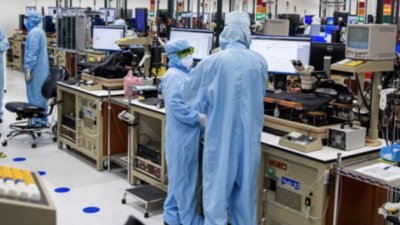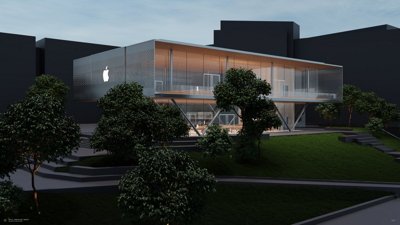The $999 software will be billed as "a powerful and easy-to-use hypervisor solution for server virtualization" that can run on any Intel-powered Apple hardware running OS X Leopard Server, including the brawny Xserve and Mac Pro.
Like VMware's Fusion 2.0 software due later this year, Parallels Server will boast support for OS X Leopard Server as a guest operating system in a virtual machine, allowing enterprises to more effectively consolidate server resources, support legacy OSes and applications, streamline server and application deployment, reduce maintenance and management, simplify software testing and development, and optimize server and application availability.
More specifically, Parallels Server will include a wide range of enterprise-class features, such as:
- Virtual Support for 4-way Symmetric Multi-processing (SMP), which lets users assign up to 4 virtual cores to a virtual machine for exceptional performance under heavy workloads. 2-way SMP is also supported, giving users an unsurpassed level of virtual machine customization.
- The inclusion of key next-generation technologies such as an ACPI BIOS, and support for up to 32GB of physical RAM.
- Support for Intel Virtualization Technology (Intel VT-x) technologies to take full advantage of hardware-assisted acceleration.
- A fully Scriptable Multi-client Parallels Management Console that lets users manages virtual and physical servers locally and remotely. The Parallels Management Console’s APIs are completely open and scriptable with Python, enabling administrators to automate common server tasks straight from the command line.
- An Integrated Toolset that enhances and simplifies the user experience.The toolset includes: Parallels Tools, a set of helpful utilities that make working with virtual servers easier and more productive; Parallels Transporter, a built-in, assistant driven physical to virtual (P2V) and virtual to virtual (V2V) migration tool; and the Parallels Image Tool, which lets users modify settings of their virtual hard disk.
- The ability to run any combination of more than 50 different x86 (32-bit) and x64 (64-bit) guest operating systems, including the just released Windows Server 2008 in secure, high-performing virtual machines.
- A Powerful SDK that enables third party vendors to integrate Parallels Server support into their products. The SDK is the same one used by Parallels engineers to build the Parallels Management Console.
Additional details on Server for Mac will be available from Parallels' website when the software is made available for purchase and download on Tuesday. Server for Mac will also be available via the Parallels worldwide network of channel partners.
 AppleInsider Staff
AppleInsider Staff






-m.jpg)






 Charles Martin
Charles Martin
 Marko Zivkovic
Marko Zivkovic
 Andrew Orr
Andrew Orr
 Amber Neely
Amber Neely

 William Gallagher and Mike Wuerthele
William Gallagher and Mike Wuerthele











12 Comments
I wonder how long Parallels will be around. We moved to VMWare after it came to market because Parallels support and feature forcing was causing all kinds of problems at work. Interesting to see them move at a faster pace than VMWare all the same though...
VMware still has a long ways to go in terms of user friendliness. Responses from their tech support typically involve telling the user open a package and edit some configuration file. You can't even rename a virtual machine without manually editing a config file. Putting all files in a package/bundle causes problems when you want to remove things like hard drive images.
Will this new version of Parallels still scatter cryptically named files all over the Extensions folder? Or will it finally put everything in its own folder?
VMware still has a long ways to go in terms of user friendliness. Responses from their tech support typically involve telling the user open a package and edit some configuration file. You can't even rename a virtual machine without manually editing a config file. Putting all files in a package/bundle causes problems when you want to remove things like hard drive images.
Will this new version of Parallels still scatter cryptically named files all over the Extensions folder? Or will it finally put everything in its own folder?
I don't claim that VMWare is the end all be all but it is more stable and more user friendly from my point of view. I have moved VM's to and from computers with ease and no problems. Stability is the biggest thing I find with VMWare. The downer is making the connection to the network successful. I am not sure why we have had so many problems with that feature compared to Parallels but we have.
Parallels, well, it has it's plus and minuses as well.
$999, eh? And Parallels all of a sudden supports multiple cores and 64-bit guests when it never did before? I believe I'll stick with VMware for its performance and stability in these areas that have been supported already for many years.
999.00 is a RIP OFF!!!
VMWare is going to support the Mac OS X Server feature in the new 2.0 software that will be a free upgrade for existing users. I have been using the beta of Parallels, but I was assuming that this software would be in the 199.00 or at the most the 299.00 area. Virtualbox is even showing a lot of promise. I think for this price tag I will keep using VMware and I think I will advise all of my customers to do the same.